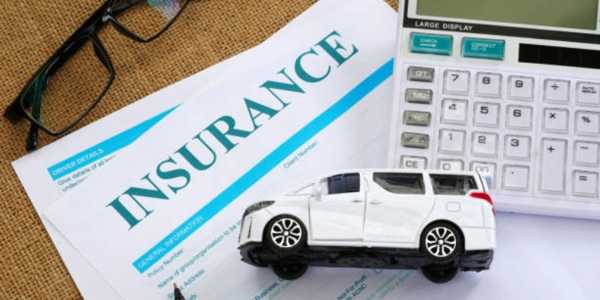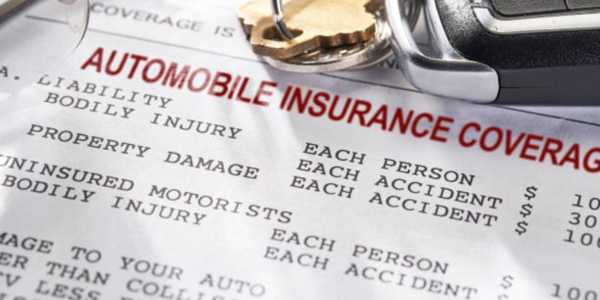What Does Car Insurance Typically Cover?
You must have heard to “car insurance” numerous times, but do you know its actual definition? If you feel lost or confused at some point with the specifics, rest assured, you are not the only one. We will simplify all the critical information you need to know concerning what is covered in a car insurance policy. We will analyze its standard elements, the different types of policies available, and tips on how to choose the ideal insurance coverage for your car.
Grasping the Fundamental Concepts
As a start: in simple terms, car insurance is a form of agreement you enter into with an insurance firm. The company reimburses you for damages to your automobile caused by accidents as long as you pay the premiums. But here’s the thing - what is reimbursed can differ greatly depending on the type of policy you choose. Let's explore the most popular ones in regards to car insurance coverage types.
Liability Coverage
Liability insurance is required almost everywhere for legal reasons. If you get into an accident, this insurance will cover the cost of injuries to other parties involved in the accident. It comprises two parts: bodily injury liability and property damage liability. Bodily injury liability covers the medical costs of the injured parties, while property damage liability covers replacement of any damaged property. You can think of it as a protection plan for others.

As an example, picture yourself hitting another car during parking. You would not have to pay for the damages caused to the other car since the liability coverage will cover it. Do not forget that this does not cover your own car or injuries, but we will come to that later.
Collision Coverage
What if the other vehicle collided with yours? Then, how would you find compensation? This is what collision coverage is intended for. If you crash into a tree or if someone rams a vroom into your car, you can claim for repair or replacement expenses on your car regardless. Insurance providers usually provide this with a caveat: You will have to pay a certain deductible. This is a fixed amount that you pay for something before the insurance pays the rest.
Consider this situation; you’re heading home one evening and mistakenly take a sharp turn only to collide with a lamppost. It is possible that collision coverage could take care of damages like the bumper and headlights, minus the deductible. Bear in mind that for a financed or leased vehicle, collision coverage is a must.
Comprehensive Coverage
The use of comprehensive coverage comes to light when damage caused is done by external factors and not from a collision. Here’s a few: theft, fire, vandalism, natural calamities, or even a collision with an animal. Unlike collision coverage, comprehensive coverage is not exclusively for the insured who is to blame for the damage and this makes it quite useful.
You’re probably wondering how this applied, well picture this scenario: A hailstorm unexpectedly hits your area overnight, leaving dents all over your car. Without comprehensive coverage, those repairs could come straight out of your wallet. Alternatively, if you do have comprehensive coverage, you’d likely only have to pay the deductible and the damage reimbursement premium will be settled with your insurance provider.
Comparing Policies
Each person has their view over and approach to coverages. One needs to gauge their financial state, expertise in driving, and where they live before choosing. In simpler terms, someone who lives in a crowded metropolitan city would rather have comprehensive coverage due to the chances of their vehicle getting stolen or vandalized is higher. For rural residents, the chances may be lesser, but their vehicles are now prone to wildlife which results a shift in focus to getting more collision coverage.
Analyzing the cost versus benefits is crucial just as assessing one’s specific needs. The additional protection is appealing initial seeing that it comes with higher premiums enabling the need coverage deeper. Keep in mind some insurers give discounts for not just bundling multiple policies but also having a clean driving record.
Moreover, older cars often do not possess the market value that would justify high cost coverage, but luxury vehicles are often the opposite and contain high market value. They do, however, require specialized policies due to their unique features and expensive repair requirements.

Specialized Coverages
In addition to the core offerings, there are other specialized coverages that tackle sue particular issues including:
Medical Payments Coverage: In case of an accident, this covers the medical expenses for you as well as your passengers, no matter who is at fault.
Uninsured/Underinsured Motorist coverage: Pprotects you financially against underinsurance in case you are hit by a car with less adequate insurance or none at all.
Gap Insurance: Assists in filling the gap between what is owed on a leased/financed vehicle and its cash value if it becomes totaled.
Rental Reimbursement: Funds the renting of a vehicle while the damaged one is being repaired.
Roadside Assistance: Gives assistance in cases of flat tires, dead batteries, lock-outs, and other emergencies.
Different types of coverage have certain affects based on an individuals personal situation. For instance, young or long distance drivers might greatly benefit from having roadside assistance, while daily short distance commuters would appreciate rental reimbursement.
Real-Life Examples
These coverages are best understood in use. Hence, we will discuss some practical examples below.
Example 1: Low-Speed Collision Accident
While you are driving you notice another car that is turning and without checking turns and collides into your vehicle. You are lucky that no one is injured, although both cars have sustained some damage. With your level of insurance, the costs for repairs to the other vehicle are paid from liability coverage and the collision coverage settles your vehicle. While settlement of any deductibles do incur some expenses, having coverage did minimize the impact to you greatly.
Example 2: Natural Calamity Hits
A storm comes through the town which results in strong winds and torrential rain. Some unfortunate individual gets a gust at the wrong time and a branch from a tree lands directly onto your car and proceeds to smash the windshield and create a nasty dent in the roof. Luckily, after payment of your deductible the insurance company will cover the damaged parts of the car because you have comprehensive coverage. Without it, the expense would undoubtedly cause one to be under immense financial strain.
Policy terms are essential and these examples illustrate their importance. Knowing them helps you during difficult times.

Insider Tips & Insights
Car insurance can feel tricky to deal with but it does not have to be. Here are some useful tips to assist you with good decisions:
Shop Around: Never accept the very first quote that you were sent. It’s vital to check what other companies are offering because rates and perks can and do differ greatly. In doing so, you are guaranteed to get the best deal.
Review Regularly: Getting married? Moving? Buying a new car? These significant life markers greatly impact and may change your coverage. Checking your policy from time to time was important and aligning it with the current reality will prevent issues.
Ask Questions: If you are having certain clauses that do not give you clarity, your greatest tool is your agent. They will provide answers that can ensure your comfort with any significant decision.
Bundle When Possible: Separate auto and home insurance policies can be combined under one provider which will enable the client to pay ‘bundled’ deductible at a reduced price.
Drive Safely: Keeping your driving record free from accidents and violations comes with great advantages such as discounts on your premium and reward programs offered by numerous insurers.
To summarize, everything matters when it comes to building a custom plan that fits, so you should always remember these steps.
This concludes our look at car insurance coverage, and the hope is you feel more equipped to take on any obstacles that may come your way when you are behind the wheel.



